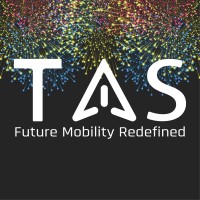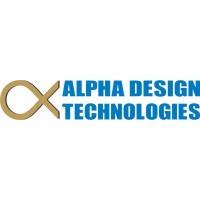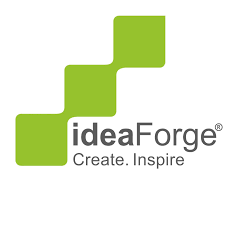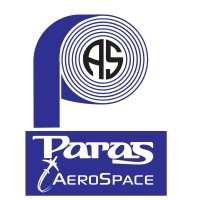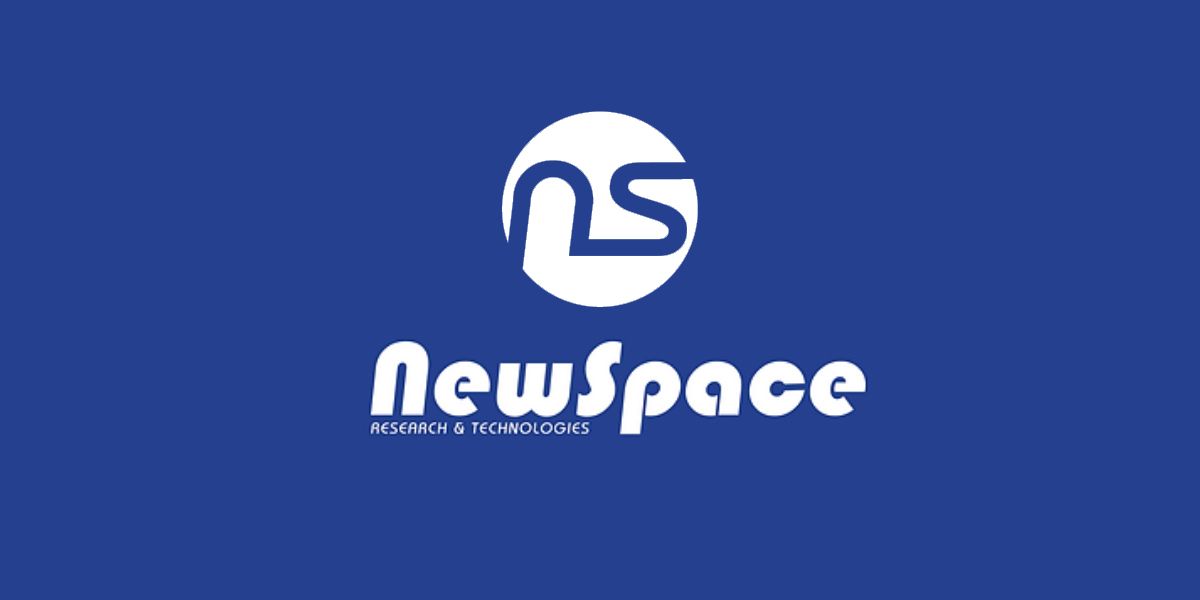Feed aggregator
Keysight Introduces Comprehensive LPDDR6 Solution for End-to-End Memory Design and Test Workflows
Keysight Technologies, Inc. announced the Low-Power Double Data Rate 6 (LPDDR6) design and test solution, a complete design and test solution to support the next technology wave for memory systems. The solution significantly improves device and system validation, providing new test automation tools necessary for advancing AI, especially in mobile and edge devices.
The memory market is evolving due to the rising demand for high-performance computing, AI, and energy-efficient mobile applications. LPDDR6 significantly enhances performance and efficiency to support next-generation compute system requirements, making it a crucial upgrade for contemporary devices.
Test complexity has grown with the adoption of next-generation memory devices such as LPDDR6, HBM4, and GDDR7. These technologies demand advanced test methods to ensure reliability and performance, and reducing test times while maintaining accuracy is a constant challenge.
Keysight’s complete workflow solution consists of transmitter and receiver test applications and the Advanced Design System (ADS) Memory Designer workflow solution. The LPDDR6 test solution can be paired with Keysight EDA software and the Keysight Memory Designer bundle to achieve faster design confidence from simulation to verification and test. The LPDDR6 test automation solution is based on Keysight’s UXR oscilloscope and high-performance M8040A Bit Error Ratio Tester.
LPDDR6’s impact is expected to reach beyond mobile devices. The new memory standard’s combination of high performance and power efficiency makes it particularly suitable for AI and machine learning applications, high-speed digital computing, automotive systems, data centers, and other edge applications areas where the balance between processing power and energy consumption is crucial.
Key Benefits of Keysight’s LPDDR6 Test Solution: Accelerate Time-to-Market with Advanced Transmitter Testing- Reduce validation time with fully automated compliance testing and characterization
- Capture precise measurements quickly using industry-leading low-noise technology
- Debug design issues faster with streamlined data analysis tools
- Analyze device BER performance with extrapolated eye mask margin testing
- Achieve accurate signal measurements directly from BGA packages with specialized de-embedding capabilities
- Validate designs confidently using proven Bit Error Ratio testing methodology
- Pinpoint performance issues early by testing against multiple jitter, crosstalk, and noise scenarios
- Maximize signal integrity through detailed BER analysis and receiver equalization optimization
- Ensure high interoperability with both device and host controller validation
- Enable faster user experiences with higher data rates support
- Extend battery life and reduce power consumption in mobile and data center applications
- Build more reliable products with enhanced data integrity and system stability features
Dr. Joachim Peerlings, Vice President and General Manager, Network and Datacenter Solutions, Keysight, said: “As a leader in memory design and test solutions, Keysight continues to collaborate with JEDEC to develop the LPDDR6 standard. This new LPDDR6 standard is set to revolutionize the market, offering unprecedented speed, efficiency, and reliability, enabling the industry’s AI Edge rollout. As the deployment and use of next-generation memory devices are growing, Keysight has achieved a significant milestone in enabling faster time to market for LPDDR6 memory designs.”
The new receiver and transmitter solution will be shown to the public for the first time at DesignCon 2025, Jan 29-30, at booth number 1039 in Santa Clara, California.
The post Keysight Introduces Comprehensive LPDDR6 Solution for End-to-End Memory Design and Test Workflows appeared first on ELE Times.
Microchip Launches the Next Generation of its Low-Noise Chip-Scale Atomic Clock Featuring a Lower Profile Height of Less Than ½ Inch
The Low-Noise Chip-Scale Atomic Clock, model SA65-LN, enables frequency mixing for battery-powered devices
Developers need ultra-clean timing devices for aerospace and defense applications where size, weight, and power (SWaP) constraints are critical. A Chip-Scale Atomic Clock (CSAC) is an essential reference for these systems, providing the necessary precise and stable timing where traditional atomic clocks are too large or power-hungry and where other satellite-based references may be compromised. Microchip Technology today announces its second generation Low-Noise Chip-Scale Atomic Clock (LN-CSAC), model SA65-LN, in a lower profile height and designed to operate in a wider temperature range, enabling low phase noise and atomic clock stability in demanding conditions.
Microchip has developed its own Evacuated Miniature Crystal Oscillator (EMXO) technology and integrated it into a CSAC, enabling the model SA65-LN to offer a reduced profile height of less than ½ inch, while maintaining a power consumption of <295 mW. The new design is optimal for aerospace and defense mission-critical applications such as mobile radar, dismounted radios, dismounted IED jamming systems, autonomous sensor networks and unmanned vehicles due to its compact size, low power consumption and high precision. Operating within a wider temperature range of -40°C to +80°C, the new LN-CSAC is designed to maintain its frequency and phase stability in extreme conditions for enhanced reliability.
“A significant advancement in frequency technology, our next generation LN-CSAC provides exceptional stability and precision in a remarkably compact form,” said Randy Brudzinski, corporate vice president of Microchip’s frequency and time systems business unit. “This device enables our customers to achieve superior signal clarity and atomic-level accuracy, while also benefiting from reduced design complexity and lower power consumption.”
The LN-CSAC combines the benefits of a crystal oscillator and an atomic clock in a single compact device. The EMXO offers low-phase noise at 10 Hz < -120 dBc/Hz and Allan Deviation (ADEV) stability <1E-11 at a 1-second averaging time. The atomic clock provides initial accuracy of ±0.5 ppb, low frequency drift performance of <0.9 ppb/mo, and maximum temperature-induced errors of < ±0.3ppb. Together, the LN-CSAC can save board space, design time and overall power consumption compared to designs that feature two oscillators.
The crystal signal purity and low-phase noise of LN-CSAC are designed to ensure high-quality signal integrity, which is essential for frequency mixing. The atomic-level accuracy allows for longer intervals between calibrations, which can help extend mission durations and potentially reduce maintenance requirements.
Microchip’s products for aerospace and defense are designed to meet the stringent requirements of these markets, offering high reliability, precision and durability. The company’s solutions include microcontrollers (MCUs), microprocessors (MPUs), FPGAs, power management, memory, security and timing devices that ensure optimal performance in mission-critical applications such as avionics, radar systems, and secure communications. Visit Microchip’s aerospace and defense solutions web page for more information.
The post Microchip Launches the Next Generation of its Low-Noise Chip-Scale Atomic Clock Featuring a Lower Profile Height of Less Than ½ Inch appeared first on ELE Times.
The world’s smallest eSIM solution for mobile consumer devices: Infineon launches OPTIGA™ Connect Consumer OC1230
Wearables, smartphones, tablets: In the consumer sector in particular, the demand for ever greater functionality, simplicity, and battery lifetime is increasing. Infineon Technologies AG contributes to these requirements with the introduction of the OPTIGA Connect Consumer OC1230. It is the world’s smallest GSMA-compliant and first 28 nm eSIM solution. OPTIGA Connect Consumer allows up to 50 percent less energy consumption compared to eSIMs on the market, extending the lifetime of the device’s battery without compromising on performance. It also contributes largely to more convenience since eSIMs can be managed remotely, making haptic SIM changes abundant thus saving time and resources and allowing for greater flexibility. Smartphone users can switch between different providers more easily, manufacturers can be more flexible in their design since physical access is not required. This can be a large advantage in IoT devices. Above all, OPTIGA Connect Consumer OC1230 is ideal for consumer devices such as smartphones, tablets, and notebooks, and even for small devices such as smartwatches and other wearables as well as 5G routers and POS payment terminals.
The OPTIGA Connect Consumer OC1230’s security architecture is based on Arm v8 and Infineon’s Integrity Guard 32 technology for increased performance and reduced power consumption. It enables a gain of 25 percent power/performance ratio compared to existing eSIMs on the market, thus extending the lifetime of the device’s battery. Remote SIM provisioning (RSP) and multiple enabled profiles (MEP) compliant with GSMA SGP.22 v3 enhance the end user experience. Users can download and store several mobile network operator profiles and remotely activate multiple profiles simultaneously.
With only 1.8 x 1.6 x 0.4 mm, the ultra-small chip-scale packaging reduces printed circuit board (PCB) space requirements by a factor of 37 relative to Nano SIMs and by a factor of 130 compared to standard SIMs. The OPTIGA Connect Consumer OC1230 is also available in X2QFN20 (3.0 x 3.0 x 0.3 mm) package. The eSIM solution features a large memory of 1 MB to accommodate multiple network operator profiles along with additional applications and user data.
OPTIGA Connect Consumer OC1230 is security evaluated according to BSI-CC-PP-0100-2018, specified in GSMA SGP.25 and is based on post-quantum-cryptography-(PQC) ready hardware.
The post The world’s smallest eSIM solution for mobile consumer devices: Infineon launches OPTIGA™ Connect Consumer OC1230 appeared first on ELE Times.
Fortune Cookie
 | This was inside my fortune cookie at lunch today. [link] [comments] |
TRUMPF and iThera demo VCSEL-based subsystem for optoacoustic medical imaging and sensing
Ortel transfers C-band high-power cw laser from Emcore fab to Canadian Photonics Fabrication Centre
III–V Epi advocates GaAs epi regrowth for emerging semiconductor laser applications
Error assessment and mitigation of an innovative data acquisition front end

The recent design idea (DI) “Negative time-constant and PWM program a versatile ADC front end” disclosed an inventive programmable gain amplifier with integral samples-and-holds. The circuit schematic from the DI appears in Figure 1. Briefly, a PWM signal controls the switches shown. In the X0 positions, a differential signal connected to the inputs of op amps U1a and U1b drives a new voltage sample across capacitor C1 through switches U2a and U2b. Because switch U2c’s X-to-X1 connection is open, capacitor C2 is “holding” a version of the previous sample. This “held” version was amplified by the subcircuit consisting of U2a, U2b, U1c, C1, R1, R2, and R3 with switches in the X1 position. The U1c-based gain-of-two amplifier applies positive feedback through R1 and U2a to the load of C1 in series with the resistance of U2b. This causes the voltage across the load to increase exponentially (with a positive time constant), affording a gain which is a function of the time period that the switches are in the X1 position. The advantage of this approach is that programmable, wideband gains of 60 dB or more can be achieved because the op amps’ maximum closed loop gain is only 6 dB; bandwidth is not sacrificed to achieve a high closed-loop gain.
Wow the engineering world with your unique design: Design Ideas Submission Guide
 Figure 1 Two generic chips and five passives make a versatile and unconventional ADC front end.
Figure 1 Two generic chips and five passives make a versatile and unconventional ADC front end.
As with any design, this one has errors and characteristics whose nature must be understood before compensation can be considered. These include passive component tolerances; op amp input currents (negligible) and offset voltages; switch turn-on and turn-off times; leakage currents; as well as resistances and switching-induced charge injections. A non-obvious error can also exist which might be termed a “dead zone”. At time t = 0 when the X1 positions are initially active, the sum of a positive low amplitude VIN – (-VIN) input voltage sample and various errors can yield a negative voltage at the non-inverting input of U1c. Consequentially, U1c’s output voltage would not trend positive and, assuming the analog-to-digital converter (ADC) driven by VOUT accepts only positive voltages, the circuit would not work properly. To understand how to bound this undesirable behavior and for other reasons, it’s wise to develop equations to analyze circuit behavior. Some analytic simplicity is possible when the switches are in the X0 position and operation is mostly intuitive. But operation in the X1 position will require a bit of a deeper dive.
Charge injection errorOp amp input offset voltages and switch resistances are commonly well-understood. As for switch leakage current and charge injection, there’s a referencei that provides an excellent discussion of each. Charge injection Q is most pernicious when the switch transitions from “on” to “off” and a switch terminal is connected to a circuit path which includes a capacitor C and is characterized by a high resistance.
This extends the time for the error voltage Q/C impressed upon the capacitor to “bleed off”. This is not a concern for U2b’s X pin at any time, because both X0 and X1 positions provide a low “on” resistance path. But it must be considered for U2a and U2c when respectively, X0 and X1 turn off. For U2a, X1 is in series with relatively large resistance R1. When U2c’s X1 is turned off and C2 is in hold mode (allowing an analog to digital conversion), C2 sees X1’s multi-megaohm “off” resistance. There is no mechanism to bleed off and recover from U2c’s charge injection error; it is inherent in circuit operation until the PWM reactivates X1 for “tracking” mode, during which time conversions are precluded.
Leakage currentThis same high resistance might create a real problem due to leakage current. Such currents flow continuously from U2’s power supplies through its internal ESD diodes to the switch terminals. What saves the circuit from these errors is that an analog to digital (A-to-D) conversion of VOUT can be triggered quickly after X1 turns off, before significant leakage current errors can accumulate. Leakage from terminal X of U2b can be ignored because as mentioned before, it’s always connected to a low resistance through X1 to ground or X0 to U1b’s output. Not so the X terminal of U2a with its connection to moderately high resistance R1. Here the leakage current effect must be considered.
LTspice model and equation validationTaking all this into account, equations can be developed with reference to the circuit seen in Figure 2. Figure 2 is an illustration of the LTspice file developed to model Figure 1 circuit operation and compare it with the equations (which are also evaluated in the file) to ensure their accuracies.
U2a charge injection is not explicitly shown in the circuit, but is incorporated by summing it with the intended input sample voltage Vin in the .param Vc0 statement. The .param statements and the circuit constitute the model. These statements and the algebraic expressions assigned to voltage sources eq_1 and eq_VOUT validate the equations by allowing direct comparisons with the performance of the model. This is accomplished by graphing simulations of the circuit and evaluations of the voltage sources and confirming that eq_1 = e_1 and that eq_Vout = Vout. Not accounted for are switch turn on and turn off times. Their effects will be addressed later.
Figure 2 The LTspice file comparing the performances of the circuit model and the equations developed of it.
Reference Figure 1 and Figure 2, particularly Figure 2’s .param statements. At time t = 0 when the X0 switches turn off and the X1’s turn on, the voltage across C1 has been initialized to Vc0 as seen in the C1 initial condition (IC) and the .param Vc0 statements. We can write that the current (w) through C1 can be seen in [1].

Therefore:

Assuming a solution of the form:
![]()
Where t = time, [3] and [4] can be seen:
![]()

And:

Therefore, the voltage at terminal e_1 can be seen in [6].
![]()
To evaluate the voltage at terminal e_2 in the model, it is necessary to convolve the signal at e_1 with the impulse response h(t) of the rc and C2 network shown in [7].

Where the exponential time constant can be seen in [8].
![]()
The convolution is given by [9].

This evaluates to [10].
![]()
Where:
 Allowing for the U2c charge injection and U1d input offset, shown in [12].
Allowing for the U2c charge injection and U1d input offset, shown in [12].
![]()
or equivalently:
![]()
The model and this last equation above predict the circuit output at any time t = t1 immediately after the charge injection of U2c has occurred due to the enabling of the X0 switches.
AssessmentsLet’s get some worst-case error parameter values for U1 and U2. The original DI proposed specific op amp TLV9164ii, but not a particular 74HC4053. Surprisingly, there are significant differences between parts from different 74HC4053 manufacturers. The MAX74HC4053Aiii looks like a reasonable choice. Let’s consider operation of both IC’s in the commercial temperature range of 0 to 70°C. Refer to Table 1 and Table 2.
|
Supply |
Temperature range |
Input current, typical |
Input offset voltage |
Input offset voltage drift |
Open loop gain minimum |
|
5-16 V |
-40 to +125oC |
± 10 pA |
± 1.3 mV |
± 0.25 µV/oC |
104 dB |
Table 1 The TLV9164 maximum parameter values.
|
Supply |
Temperature range |
Switch resistance |
Switch resistance differences |
Flatness, VCOM= ±3V, 0V |
COM current |
NO current |
Charge injection |
Switch t(on) |
Switch t(off) |
|
± 5 V |
0 to 70 oC |
125 Ω |
12 Ω |
15 Ω |
± 2.5 nA |
± 5 nA |
± 10 pC |
250 ns |
200 ns |
|
5 V |
0 to 70 oC |
280 Ω |
– |
– |
± 5 nA |
± 10 nA |
± 10 pC |
275 ns |
175 ns |
|
3 V |
0 to 70 oC |
700 Ω |
– |
– |
± 5 nA |
± 10 nA |
± 10 pC |
700 ns |
400 ns |
Table 2 MAX74HC4053 parameters, maximum values. Note performance degradations when powered by a single supply.
The output of U1c will not move in a positive direction if the sign of the parameter J in [5] is negative. Assuming ADCs whose most negative input value is ground, the circuit will fail to function properly. It’s unlikely that parameters Q1, Voffab, Voffc, and iLeak all take on their worst-case values in a particular circuit, but if they do, Vin will have to be more positive than 10pC/1nF + 2·1.2mV + 1.2mV + 2.5nA * 14300 = 14mV to avoid this “dead zone”. Of course, you’re free to use criterion other than the sum of the worst possibilities, but Caveat Designer!
Another consideration is the circuit settling time in successive PWM periods for the sampling voltage of C1, particularly in the transit between an ADC full-scale voltage to half of its LSB (this is the most extreme case which might not be a requirement for some applications). For a ±5-V powered MAX74HC4053A, two 125-ohm switches in series drive the 1-nF C1. With a 12-bit ADC, the required time is (2·125)·1e-9·ln(212+1) = 2.3 µs. Add the switch on-time of 250 ns, and the PWM should enable the X0 switches for tmin = three of its 1 µs cycles for accurate voltage sample acquisition. By comparison, 8-bit ADC’s can get by with 2 µs.
CalibrationThe iLeak·R1 and the temperature-sensitive portions of U1’s input offset voltage errors are negligible in comparison with the ones caused by charge injection. However, as noted in the referencei and in typical curves provided in the switch datasheetiii, the magnitudes and signs of voltages will significantly affect the sizes of the charge injections Q1 (U2a) and Q2 (U2c) and also somewhat the ra, rb and rc resistances. For Q1, ra, and rb, the U1a and U1b input voltages are not determinable from A-to-D conversions. Increasing the values of capacitors C1 and C2 will reduce the Q/C charge injection-created error magnitudes but will also necessitate increases in PWM times. Avoiding such time increases by reducing the R1 value magnifies the errors due to mismatches of ra, rb and rc.
The resistances ra, rb and rc will vary with both temperature and voltage levels. Applying algebra to [13] shows surprisingly that if ra, rb and rc resistances are identical, there is zero error introduced regardless of their value! (This assumes that enough time has elapsed for the e-t/Tc term to be negligible. ) While not identical, the slightly less than 1% maximum mismatch error can be calibrated out, but only for a given set of switch voltages and temperature. The datasheet does not provide the information required to determine the errors that could occur when the voltages and temperature are other than those present during calibration.
With the circuit as it stands, I know of no way to eliminate temperature- and voltage-sensitive errors. But there are errors insensitive to these conditions that can be calibrated out. The following procedure assumes an ADC of negligible error (its resolution and accuracy require further investigation) and conversion factor CF counts/volt, one perhaps present on the assembly line of a product incorporating this design.
For any instance of this circuit to which specific and accurately known Vin and -Vin (See Figure 1) voltages are applied at a given temperature, [13] can be thought of as a function of time and Vin: VOUT(t, Vin). VOUT(t1, Vin), VOUT(t2, Vin), and VOUT(t3, Vin) can be captured such that t3/3 = t2/2 = t1 > tmin. A t1 value of 15 µs is suitable, and Vin = 20 ms avoids the dead zone. (The reason for such a small input voltage is given later.) A t3 of 45 µs applies a gain of less than 24 and keeps things under a 1.8 V full scale A-to-D level. It will be appreciated that et3/T = (et1/T)3 and et2/T = (et1/T)2 and that:

where each VOUT(t, Vin) is scaled by CF to a measurement made by the product line A-to-D. The difference terms cancel the constant terms in [13], and the ratio cancels the A·N term. Such cancellations are necessary if T is to be determined accurately. [14] is a quadratic equation, the desired of the two solutions of which is given by :

From this, the value of T can be obtained (note that T depends slightly on ra because of Req and so it also depends on voltage and temperature):
![]()
Further:
![]() Allowing the solution:
Allowing the solution:
![]()
N( ) is a function of Vin (see .param N) and is equal to SVin + U where S and U are unknown and again are slightly dependent on the usual. The process of equations [14] to [18] will need to be repeated with a value Vin2 different from Vin to arrive at an AN2 term. We could use different values of t, but we might as well keep the same ones. We can safely choose Vin2 = 25 mV (incurring a charge injection and switch resistances very close to that with Vin = 20 mV) and calculate:

![]()
From [13] it can be seen that:
![]()
so that:
![]()
Given an A-to-D conversion count and reversing [22], it can be seen that:

never forgetting that even this result is influenced by the usual.
Because of their negligible sensitivities to voltage and temperature, NPO/COG capacitors and 25 ppm or better metal film resistors are recommended. 1% or better parts are available at costs around .01 USD in quantity.
ConclusionsThis innovative circuit has several features to recommend it. It offers differential to single ended conversion with very high CMRR and wide common mode operating range. It offers gains starting at 6 dB in increments of .6dB limited only by the combination of the sampled voltage and saturation at the positive supply rail. Op-amp gains are no greater than 6 dB, so there is no loss of bandwidth due to operation at high closed-loop gains. But this design has some disadvantages.
A detailed calibration scheme is needed which requires the availability on the production line of an ADC whose requirements for accuracy and resolution have not yet been determined. Even with calibration, various errors which cannot be rescued by calibration can impose an operational “dead zone” for circuit input voltages less than up to 14 mV. Errors due to switch charge injection and switch resistance vary with temperature and applied voltages and are difficult if not impossible to calibrate out. The MAX74HC4053A discussed here is a better ‘4053 than others, but another part may exist with less variations in resistance and charge injection.
I would suggest disconnecting the U2c X0 pin. This connection is of limited usefulness and does damage—it injects charge into U1c, affecting the signal fed through R1 to C1. (The effect on C2 during the “hold” mode can be neglected, being of very short duration due to the X1 rc “on” resistance in the C2 path.) If it is decided to retain this connection, please note that its effects have not been accounted for in the foregoing analysis.
Finally, I’d like to acknowledge the comments of eldercosta, a review and comments with some unique perspectives by David Lundquist, and especially the comments and contributions of Stephen Woodward, who designed the circuit discussed in this DI.
Christopher Paul has worked in various engineering positions in the communications industry for over 40 years.
References
ihttps://www.analog.com/media/en/training-seminars/tutorials/MT-088.pdf
iiihttps://www.analog.com/media/en/technical-documentation/data-sheets/MAX4051-MAX4053A.pdf
Related Content
- Negative time-constant and PWM program a versatile ADC front end
- In-situ software calibration of the flying capacitor PGINASH
- Brute force mitigation of PWM Vdd and ground “saturation” errors
- Parsing PWM (DAC) performance: Part 3—PWM Analog Filters
- Minimizing passive PWM ripple filter output impedance: How low can you go?
The post Error assessment and mitigation of an innovative data acquisition front end appeared first on EDN.
Top 10 Smart Lighting Companies in India
India’s smart lighting industry is witnessing rapid growth, driven by innovation, sustainability, and advancements in technology. Leading companies are transforming traditional lighting systems into intelligent solutions that cater to modern lifestyles and smart homes. From globally renowned brands like Philips and Osram to trusted domestic players like Havells, Syska, and Bajaj Electricals, these companies are revolutionizing how lighting integrates with everyday life. With features such as energy efficiency, voice control, automation, and seamless connectivity to home automation platforms, the industry is setting benchmarks for convenience and customization. As the demand for smart living increases, these companies continue to push the boundaries of innovation, offering sustainable and user-centric lighting solutions across residential, commercial, and industrial sectors.
Philips India Limited
Philips India Limited, a global leader in lighting solutions, is renowned for its innovative smart lighting products that combine advanced technology with seamless functionality. The company offers an extensive range of smart bulbs, fixtures, and lighting systems designed to integrate effortlessly with popular home automation platforms like Alexa, Google Assistant, and Apple HomeKit. Known for enhancing convenience, energy efficiency, and customization, Philips continues to redefine modern lighting solutions for homes, offices, and public spaces.
Havells India Limited
Havells India Limited is a leading name in the electrical and consumer goods industry, renowned for its innovative and energy-efficient solutions. The company offers a wide range of smart lighting products, including LED bulbs, fixtures, and automation systems designed to elevate modern living. Known for its commitment to quality, sustainability, and cutting-edge technology, Havells seamlessly integrates advanced lighting solutions with user-friendly features, making it a trusted choice for homes, offices, and commercial spaces across India.
Syska LED Lights Pvt. Ltd.
Syska LED Lights Pvt. Ltd. is a prominent player in the smart lighting industry, known for its innovative and energy-efficient solutions. The company offers a diverse range of smart LED lighting products, including bulbs and fixtures, that are compatible with voice assistants like Alexa and Google Assistant. With features like customizable colors, brightness levels, and scheduling options, Syska’s smart lighting solutions are designed to enhance convenience and elevate modern lifestyles. The brand’s focus on sustainability and cutting-edge technology has made it a preferred choice for homes, offices, and commercial spaces across India.
Bajaj Electricals Ltd.
Bajaj Electricals Ltd., a trusted name with a rich legacy in the lighting industry, has successfully ventured into the smart lighting segment. The company offers a wide range of innovative products that blend traditional reliability with modern technology, including smart LED bulbs, fixtures, and automation systems. Known for its commitment to quality and energy efficiency, Bajaj’s smart lighting solutions are designed to provide convenience, customization, and sustainability, making them ideal for homes, offices, and commercial spaces across India.
Wipro Lighting
Wipro Lighting is a leading provider of innovative lighting solutions, offering a diverse range of smart lighting products tailored for residential and commercial spaces. The company focuses on delivering energy-efficient and sustainable solutions that combine advanced technology with superior design. Wipro’s smart lighting systems provide customizable options, including automation and voice-controlled features, ensuring convenience and enhanced user experiences. With a strong emphasis on sustainability and innovation, Wipro Lighting continues to set benchmarks in the lighting industry.
Osram India Private Limited
Osram India Private Limited, a subsidiary of the globally renowned lighting company Osram, is a leader in advanced smart lighting solutions. The company caters to a wide range of sectors, including automotive, residential, and commercial lighting, offering innovative and energy-efficient products. Osram’s smart lighting solutions are designed to integrate seamlessly with modern technologies, providing enhanced functionality and customization. With a strong focus on quality, innovation, and sustainability, Osram India continues to redefine lighting standards across industries.
Samsung India Electronics Private Ltd.
Samsung India Electronics Private Ltd. is a leading innovator in smart technology, offering a range of smart lighting solutions that seamlessly integrate with its extensive ecosystem of smart home devices. Designed to enhance connected living, Samsung’s smart lighting products provide advanced features like voice control, automation, and energy efficiency. With a focus on delivering convenience, customization, and cutting-edge technology, Samsung continues to redefine modern living experiences for homes and businesses alike.
The post Top 10 Smart Lighting Companies in India appeared first on ELE Times.
French vintage phone from the 60s has full electronic diagram inside of it. Talk about serviceability
 | submitted by /u/Dull-Pressure9628 [link] [comments] |
I modified an old phone from the 60s and added modern electronics
 | submitted by /u/Dull-Pressure9628 [link] [comments] |
Arm’s Chiplet System Architecture eyes ecosystem sweet spot

Arm has announced the availability of the first public specification drafted around its Chiplet System Architecture (CSA), a set of system partitioning and chiplet connectivity standards harnessed in a design ecosystem supported by over 60 companies. The companies that are part of the CSA initiative include ADTechnology, Alphawave Semi, AMI, Cadence, Jaguar Micro, Kalray, Rebellions, Siemens, and Synopsys.
CSA aims to offer industry-wide standards and frameworks by facilitating the reuse of specialized chiplets, and thus address the fragmentation caused by compatibility issues in chiplet design. It provides a shared understanding of defining and connecting chiplets while developing composable system-on-chips (SoCs).
A couple of recent announcements show how semiconductor firms are employing CSA to build chiplets as part of Arm Total Design, a platform for deploying chiplet-based compute subsystems. Arm Total Design facilitates custom silicon solutions powered by Arm Neoverse Compute Subsystems (CSS), which includes processor cores, IPs, software, and design tools.
Take the case of Alphawave Semi, which has combined its proprietary I/O dies with an Arm Neoverse CSS-powered chiplet. In this chiplet design, Alphawave Semi has employed AMBA CHI chip-to-chip (C2C) architecture specification to connect artificial intelligence (AI) accelerators.

Figure 1 The block diagram shows a chiplet’s major design building blocks. Source: Alphawave Semi
ADTechnology, another member of Arm’s CSA initiative, has utilized Neoverse CSS V3 technology to create a CPU chiplet for high-performance computing (HPC) and AI/ML training and inference applications. In this chiplet, ADTechnology has incorporated Rebellions’ REBEL AI accelerator; the chiplet design is implemented on Samsung Foundry’s 2-nm gate-all-around (GAA) process node, which has been standardized in the CSA ecosystem.

Figure 2 ADTechnology’s CPU chiplet is powered by Neoverse CSS V3 technology. Source: Arm
AMI, also a member of CSA initiative, is contributing its firmware expertise to accelerate the development of custom chiplet solutions. AMI, the first independent firmware vendor in the Arm Total Design ecosystem, offers modular framework for separating the compute and I/O subsystems. Its pre-configured and pre-tested production quality modules for the reusable chiplets streamline the time and resources required for this stage of development.
A multitude of industry-wide chiplet initiatives—spanning from Arm Total Design to Neoverse CSS to CSA—is a testament to how Arm sees the emergence of chiplets as a major opportunity. It also highlights how Arm sees its place as both chiplet solution provider and ecosystem builder.
The ecosystem-building part is especially crucial because RISC-V companies are also making inroads in the chiplets realm.
Related Content
- TSMC, Arm Show 3DIC Made of Chiplets
- A closer look at Arm’s chiplet game plan
- Chiplets Get a Formal Standard with UCIe 1.0
- How the Worlds of Chiplets and Packaging Intertwine
- Imec’s Van den hove: Moving to Chiplets to Extend Moore’s Law
The post Arm’s Chiplet System Architecture eyes ecosystem sweet spot appeared first on EDN.
Photon Design previews new quantum dot simulation tool at Photonics West
The beauty and complexity of some electronic devices truly amazes me
 | submitted by /u/antek_g_animations [link] [comments] |
Weekly discussion, complaint, and rant thread
Open to anything, including discussions, complaints, and rants.
Sub rules do not apply, so don't bother reporting incivility, off-topic, or spam.
Reddit-wide rules do apply.
To see the newest posts, sort the comments by "new" (instead of "best" or "top").
[link] [comments]
Forbidden connector
 | Nope, I'll leave it in place. Utterly equivalent to spaghetti code programmaning. [link] [comments] |
Top 10 Anti Drone Companies in India
The Indian skies are increasingly vulnerable to rogue drones, necessitating the development of robust countermeasures. A burgeoning ecosystem of Indian companies is rising to the challenge, developing innovative anti-drone technologies to safeguard critical infrastructure and national security. From AI-powered detection systems to electronic warfare solutions, these companies are at the forefront of ensuring airspace safety in a rapidly evolving threat landscape. Here are 10 of the top anti-drone companies in India:
- Throttle Aerospace Systems is a leading innovator in anti-drone technology, recognized for its cutting-edge solutions that protect critical infrastructure and ensure safety in airspace. Among its most notable offerings is the “Defender” system, which leverages artificial intelligence and vision-based techniques to effectively detect, track, and neutralize unauthorized drones. By integrating advanced sensing, machine learning, and automated countermeasures, Throttle Aerospace Systems provides reliable and scalable solutions to mitigate the growing threat of drones in both military and civilian contexts. The company is at the forefront of shaping the future of drone defense, ensuring secure environments across various sectors.
2. Alpha Design Technologies is a leading innovator in the development of electronic warfare systems, with a strong focus on countering emerging threats like drones. Specializing in advanced anti-drone technologies, the company designs and manufactures cutting-edge solutions to detect, track, and neutralize unauthorized UAVs (unmanned aerial vehicles). Leveraging its deep expertise in electronic systems and defense technologies, Alpha Design Technologies provides critical capabilities to safeguard airspace and sensitive infrastructure from drone-based threats. Through its commitment to research, development, and deployment of state-of-the-art electronic warfare solutions, the company plays a pivotal role in enhancing national security and defense operations.
3. Adani Defence & Aerospace is a key player in India’s defense and aerospace sector, renowned for its commitment to advancing cutting-edge technologies to support national security. With a growing focus on developing anti-drone solutions, the company is working to address the increasing challenges posed by unmanned aerial vehicles (UAVs) in military and civilian spaces. Adani Defence & Aerospace leverages its deep expertise in defense systems, electronics, and aerospace technologies to design innovative counter-drone solutions that ensure the safety of critical infrastructure and airspace. Through continuous research and development, the company is reinforcing its position as a leader in defense innovation, contributing to India’s defense modernization efforts.
4. IdeaForge, a prominent name in the drone industry, is renowned for its cutting-edge unmanned aerial vehicles (UAVs) that cater to diverse sectors such as defense, agriculture, and infrastructure. While primarily known for its drone innovations, the company is also expanding its capabilities to address the growing concerns surrounding drone-related threats. By developing anti-drone technologies, IdeaForge aims to protect its own UAVs from malicious interference and enhance the safety and security of airspace. Through the integration of advanced countermeasures and smart defense systems, IdeaForge is positioning itself at the forefront of both drone and anti-drone technology, ensuring a balanced approach to UAV safety and security.
5. Paras Aerospace is a leading innovator specializing in the development of counter-Unmanned Aerial Systems (C-UAS) technologies, aimed at addressing the growing threat of unauthorized drones. The company focuses on creating advanced solutions for drone detection, tracking, and neutralization, including cutting-edge jamming technologies to disrupt and disable rogue UAVs. With a strong commitment to enhancing airspace security, Paras Aerospace’s counter-UAS systems are designed to safeguard critical infrastructure, military assets, and public spaces from potential drone-based risks.
6. Kadet Defence Systems is a dynamic player in the field of counter-drone technology, offering a comprehensive range of anti-drone solutions designed to safeguard critical infrastructure and airspace. The company specializes in advanced systems for drone detection, tracking, and jamming, enabling effective countermeasures against unauthorized UAVs. With a focus on precision and reliability, Kadet Defence Systems provides cutting-edge technologies that help mitigate the risks posed by drones in both civilian and defense contexts. Their solutions are pivotal in enhancing security protocols, ensuring the protection of sensitive areas from potential drone-related threats.
7. Sagar Defence is a leading provider of advanced anti-drone solutions, offering a comprehensive suite of technologies designed to detect, track, and neutralize unauthorized drones. Specializing in cutting-edge drone detection and jamming systems, the company plays a crucial role in enhancing airspace security for both military and civilian applications. Sagar Defence’s solutions are built to protect critical infrastructure, military assets, and public safety from the growing threat of drone-based intrusions.
8. Veda Defence Systems is a specialized technology company focused on developing advanced electronic warfare systems, with a strong emphasis on countering drone-based threats. The company’s expertise lies in creating cutting-edge anti-drone technologies that incorporate electronic jamming, detection, and neutralization capabilities to safeguard critical infrastructure and airspace. With a deep commitment to defense innovation, Veda Defence Systems designs highly reliable solutions to counter the growing risks posed by unmanned aerial vehicles (UAVs) in both military and civilian environments.
9. Raphe mPhibr is a leading provider of advanced anti-drone solutions, offering a range of cutting-edge technologies designed to detect, track, and neutralize unauthorized drones. Specializing in drone detection, tracking, and jamming systems, the company delivers reliable and effective countermeasures to protect critical infrastructure and airspace. With a focus on precision and real-time response, Raphe mPhibr’s solutions are tailored to address the evolving threats posed by unmanned aerial vehicles (UAVs) in both civilian and military sectors.
10. NewSpace Research and Technologies is a cutting-edge company specializing in the development of advanced technologies aimed at enhancing defense and security. With a particular focus on anti-drone solutions, the company is at the forefront of creating innovative systems designed to detect, track, and neutralize unauthorized drones. Leveraging state-of-the-art technologies, NewSpace Research and Technologies provides critical solutions to protect airspace, military installations, and critical infrastructure from the growing threat posed by unmanned aerial vehicles (UAVs).
The post Top 10 Anti Drone Companies in India appeared first on ELE Times.
Top 10 Solar Power Plants in India
India is blazing a trail in renewable energy, and its solar power plants are at the forefront of this transformation. From the sun-drenched deserts of Rajasthan to the sunny plains of Karnataka and Andhra Pradesh, the country is home to some of the largest and most innovative solar parks in the world. These mega installations are not only harnessing solar power but also driving sustainable development and contributing to India’s ambitious renewable energy goals. This article highlights the top solar power plants in India, showcasing their scale, innovation, and impact on the nation’s journey toward a greener and more energy-secure future.
- Bhadla Solar Park, Rajasthan
Nestled in the sun-drenched deserts of Jodhpur, Rajasthan, Bhadla Solar Park stands tall as a beacon of India’s renewable energy revolution. Spanning an impressive 14,000 acres, it is not only the largest solar park in India but also one of the largest in the world. With a massive installed capacity of 2,245 MW, this engineering marvel has transformed the barren, arid land of Bhadla into a thriving hub of clean energy production. Known for its high solar radiation and minimal rainfall, the region provides ideal conditions for harnessing solar power, making Bhadla Solar Park a critical contributor to India’s ambitious goal of achieving 500 GW of renewable energy capacity by 2030.
- Pavagada Solar Park, Karnataka
Spread across a sprawling 13,000 acres in the sunny plains of Tumkur district, Karnataka, the Pavagada Solar Park is a shining example of India’s commitment to clean energy. With an impressive installed capacity of 2,050 MW, it ranks among the largest solar parks in the world. What makes this project unique is its inclusive approach—land for the park was leased from local farmers, providing them a steady source of income while transforming the region into a hub for renewable energy. As part of India’s renewable energy mission, this mega solar park lights up countless homes while contributing significantly to reducing the nation’s carbon footprint.
- Kurnool Ultra Mega Solar Park, Andhra Pradesh
Nestled in the Kurnool district of Andhra Pradesh, the Kurnool Ultra Mega Solar Park is a monumental step in India’s green energy journey. With an installed capacity of 1,000 MW, this solar park spans over 5,932 acres, transforming the arid terrain into a powerhouse of renewable energy. Commissioned in 2017, it was one of the first solar parks in India to achieve the milestone of a gigawatt-scale capacity. The park plays a pivotal role in supplying clean electricity to the grid, catering to the energy needs of thousands of households. With its strategic location and efficient design, Kurnool Ultra Mega Solar Park not only reinforces Andhra Pradesh’s leadership in renewable energy but also serves as a blueprint for sustainable development in the region.
- Rewa Ultra Mega Solar Park, Madhya Pradesh
Located in the Rewa district of Madhya Pradesh, the Rewa Ultra Mega Solar Park stands as a testament to India’s renewable energy ambitions. With a total installed capacity of 750 MW, this sprawling solar park, spread across 1,590 hectares, has set benchmarks in sustainability and innovation. Commissioned in 2018, it became the first project in India to supply solar power to an inter-state open access customer, powering the Delhi Metro with clean energy. Rewa’s success lies in its groundbreaking tariff structure, which made solar energy more affordable and accessible. Recognized globally as a model project, the park showcases how clean energy can drive economic growth while contributing to India’s climate goals.
- Charanka Solar Park, Gujarat
Situated in the arid Patan district of Gujarat, Charanka Solar Park is a pioneer in India’s solar energy revolution. Spanning over 2,000 hectares, this solar park boasts an impressive installed capacity of 600 MW, with plans for future expansion. Established in 2012 as part of the Gujarat Solar Park initiative, Charanka was one of Asia’s first and largest solar parks, setting the stage for large-scale renewable energy projects in India. Its unique model integrates solar power generation with water conservation and employment opportunities for local communities, making it a shining example of sustainable development. With its advanced infrastructure and scalability, Charanka continues to illuminate Gujarat’s path toward a greener future.
- Ananthapuramu-II Solar Park, Andhra Pradesh
Nestled in the sun-soaked district of Anantapur, Ananthapuramu-II Solar Park exemplifies Andhra Pradesh’s commitment to renewable energy leadership. With an installed capacity of 1,500 MW, this solar park is among the largest in India, leveraging the region’s high solar insolation to produce clean and reliable energy. It is a part of the state’s ambitious efforts to harness renewable resources while reducing dependency on conventional power sources. The park not only contributes significantly to the national grid but also supports sustainable development by creating local employment opportunities and promoting eco-friendly practices in the region.
- Mandsaur Solar Farm, Madhya Pradesh
Situated in the vibrant heartland of Madhya Pradesh, Mandsaur Solar Farm is a shining example of India’s renewable energy revolution. With an installed capacity of 250 MW, this solar farm is instrumental in powering thousands of homes while significantly reducing carbon emissions. Built on barren and unused land, Mandsaur Solar Farm exemplifies sustainable innovation by transforming wastelands into a source of green energy. Its efficient solar infrastructure contributes to the state’s energy security, aligning with India’s vision of a cleaner, greener future.
- NP Kunta (Ananthapuram Ultra Mega Solar Park), Andhra Pradesh
Nestled in the sunlit terrains of Andhra Pradesh, the NP Kunta (Ananthapuram Ultra Mega Solar Park) stands as a symbol of India’s commitment to sustainable energy. With a robust installed capacity of 978 MW, this solar park leverages the region’s abundant sunlight to generate clean and renewable energy on a massive scale. Designed with advanced technology and efficient resource management, NP Kunta not only contributes significantly to the state’s power grid but also paves the way for a greener and more energy-independent India.
- Kamuthi Solar Power Project, Tamil Nadu
The Kamuthi Solar Power Project, located in the Tamil Nadu state of India, is one of the largest solar power plants in the world. Spanning over 2,500 acres in the Ramanathapuram district, the project boasts an installed capacity of 648 MW, making it a key player in India’s push toward renewable energy. Developed by Adani Green Energy, it features over 2.5 million solar panels, generating enough electricity to power around 150,000 homes. The Kamuthi Solar Power Project is a testament to India’s commitment to reducing its carbon footprint and boosting clean energy generation, contributing significantly to the country’s renewable energy goals.
- Rajasthan Solar Park, Rajasthan
The Rajasthan Solar Park, located in the Jaisalmer district of Rajasthan, India, is one of the largest solar power installations in the world. Covering an area of approximately 5,000 acres, the park has an impressive capacity of over 2,245 MW, making it a key asset in India’s renewable energy strategy. The project, which includes multiple solar developers, aims to harness the abundant sunlight in the Thar Desert to generate clean, sustainable power. As a significant contributor to India’s goal of achieving 500 GW of non-fossil fuel-based energy capacity by 2030, the Rajasthan Solar Park plays a crucial role in the country’s transition to green energy.
The post Top 10 Solar Power Plants in India appeared first on ELE Times.
Organizer that works great for small Contact Sockets and Pins
 | submitted by /u/ModderRetro [link] [comments] |
Detail of "Diode Graphics" on 1973 Atari Arcade board
 | submitted by /u/zyzzogeton [link] [comments] |


